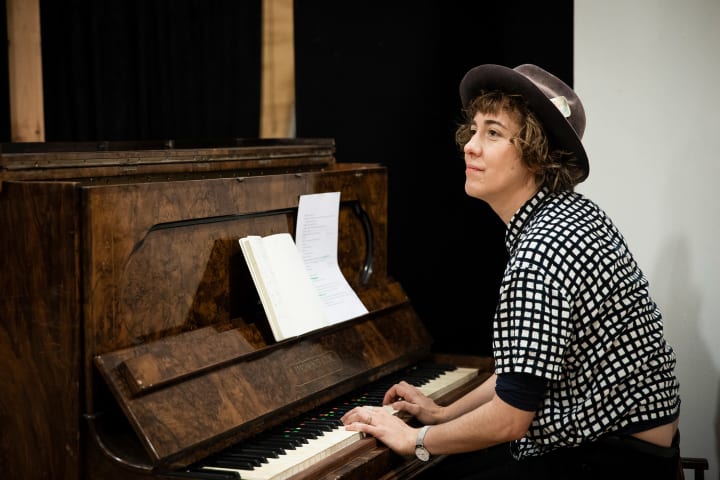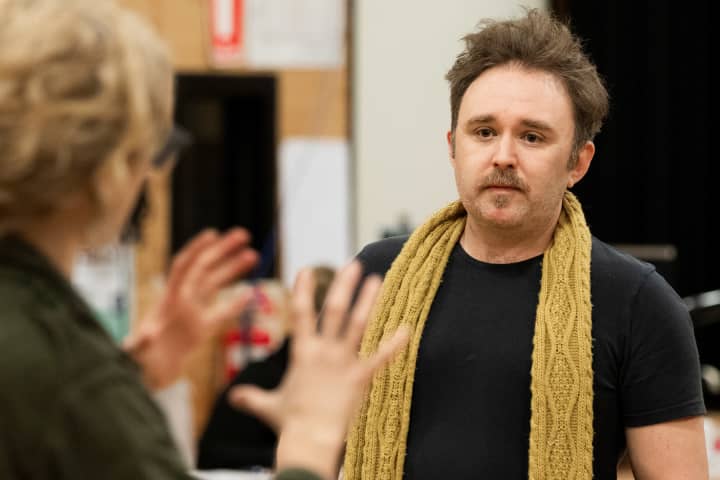In writing her thoroughly modern Cyrano, Virginia Gay has reduced the original’s large ensemble of named characters down to just three, with an additional three unnamed chorus members. In relocating a large part of the play’s action and narrative drive to the chorus, Gay has simultaneously given them significant agency in the story, on a par with that of Cyrano, Roxanne and Yan.
It’s a function that’s not always common with choruses. The Classical Greek chorus – which pre-dates theatre as we know it – comprised up to 50 individuals performing as one, in a passive role somewhat similar to that of a narrator: describing and commenting upon the action, usually through song, dance and recitation.
Initially, choruses performed at festivals known as Dionysia, held in honour of the god of wine and drama: Dionysus. They would sing hymns called dithyrambs, which told mythic tales of the god’s life and exploits. That is, until poet and choreuo (chorus member) Thespis stepped out from the choral body and began reciting lines as an individual, and engaging in dialogue with the chorus leader. This innovation ultimately lead to the birth of Athenian tragedy, and then eventually theatre as we now know it (and also gave us the word thespian).
Over the centuries, choruses have come in and out of fashion. Shakespeare used a singular chorus on occasion (in Henry V and Romeo and Juliet, for example). Today, they’re most common in musical theatre, where song and dance achieves a similar purpose as it did in ancient Greece: to comment on the action from the audience’s point of view, to express the fears and hopes of the characters, and to provide narrative structure.
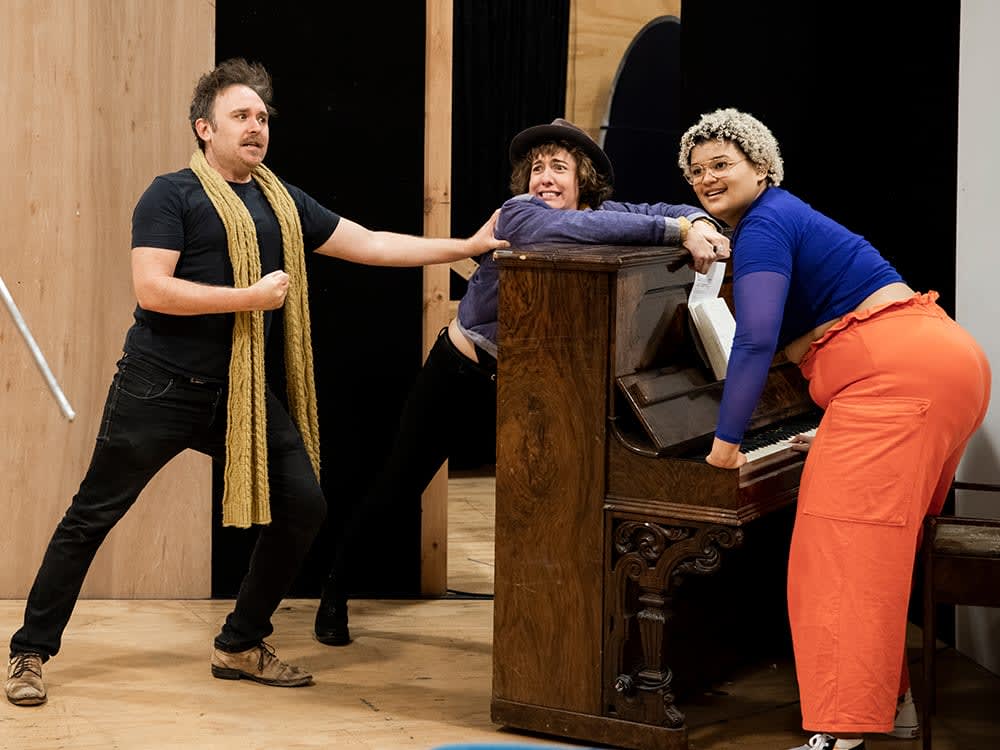
The Cyrano chorus: Robin Goldsworthy, Holly Austin and Milo Hartill. Photo: Charlie Kinross
‘The chorus is a really fascinating element in theatre,’ says Robin Goldsworthy, one of the three chorus members in Cyrano. ‘They can often be the lens through which the audience view the play. They can be all knowing, shape the story, be the voice of forewarning, but still get caught up in the narrative at times.’ They are ‘simultaneously both inside and outside of the dramatic action,’ he adds.
Fellow chorus member Holly Austin agrees. Cyrano’s chorus, she says, ‘act as a lens for the audience. When the Chorus members ask questions or express how they’re thinking or feeling, it’s often what the audience are questioning and experiencing too. They also offer three different perspectives on the story we are telling and at times they serve as Cyrano’s inner voice.’
‘Developing a physical chemistry and a movement language on the floor with my fellow chorus members is crucial. ESPECIALLY in comedy.’ – Robin Goldsworthy
In Cyrano, Virginia Gay is simultaneously interrogating the original play by Edmond Rostand and telling a new story. Although the original play didn’t feature a chorus, Gay’s inclusion of one in her version is just one of the clever ways she draws a line between old and new forms of theatrical storytelling.
Milo Hartill, the show’s third chorus member, elaborates: ‘The chorus very much acts as a camera for the action and as a voice for the old and new versions of Cyrano,’ she explains. These three characters help ‘to analyse why we continue to tell old stories, and to question what purpose stories actually serve. They also work as a way to look at how we can tell new stories, and how we can all be involved in telling new stories.’ Their active interrogation of storytelling, Hartill suggests, sits in opposition to ‘the old stories, which serve and represent a very small amount of people’.
Continuing, Hartill says the entire story of Cyrano, and its casting, ‘works to show the stories we can all tell, and how those stories change depending on who is in each role. Even looking just at the Chorus, Holly, Bobby and I – in our bodies and in what and who we visually represent – come from such different backgrounds but as actors, and as our characters, we’re working together to tell the story of Cyrano in a new way.’
Meet your chorus
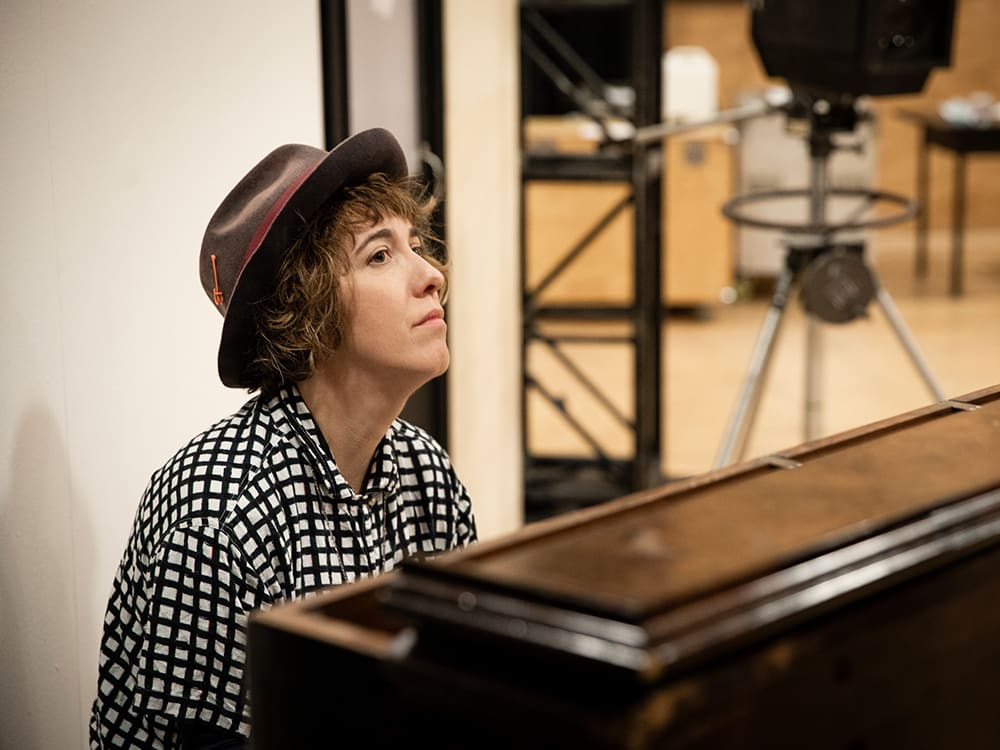
Holly Austin is an actor, a musician, a playwright, a trained clown and improviser, and chorus member number 3. Her character’s bravery changes the course of the play.
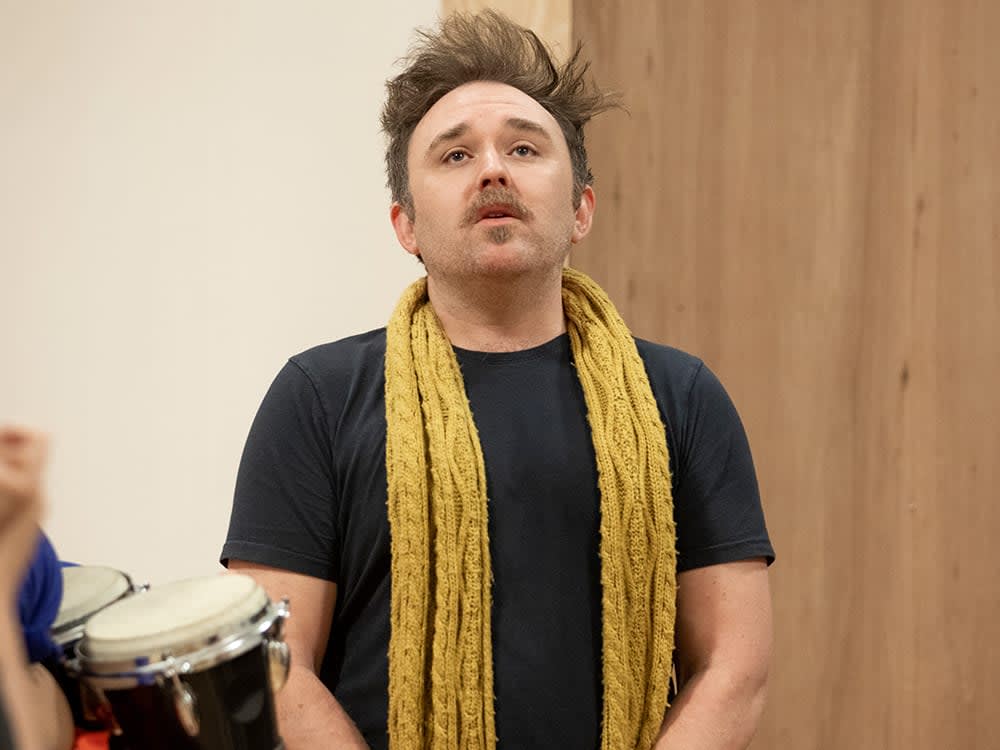
Playing chorus member number 2, a character who is ‘insufferably intense about theatre’, professional pretender Robin Goldsworthy says he’s basically playing himself as he was at age 22.
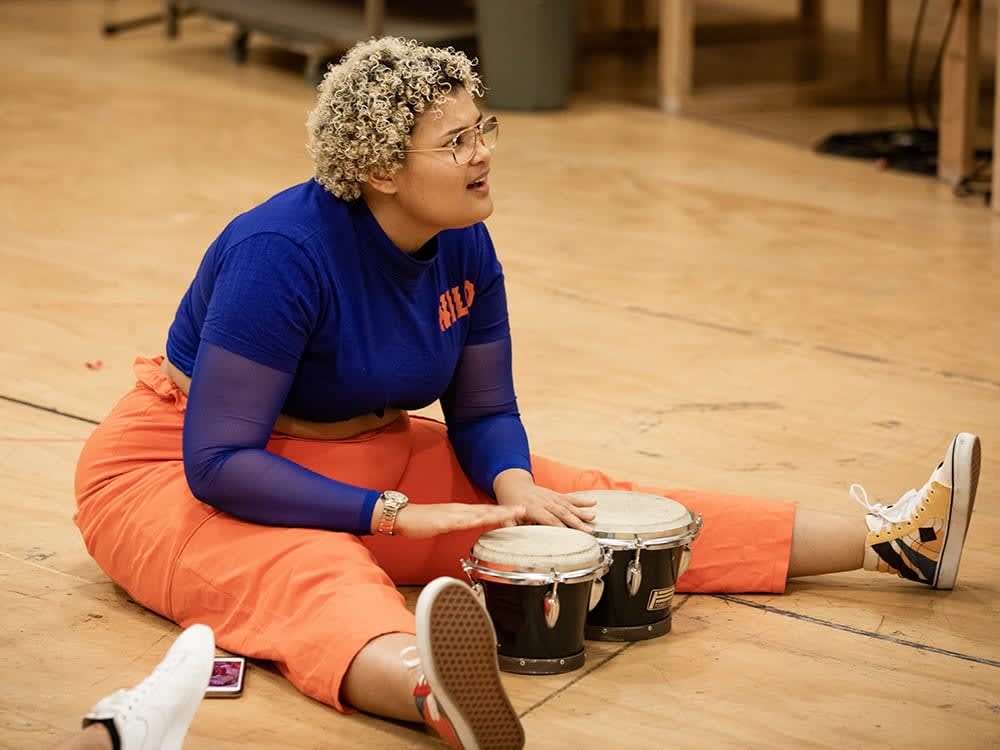
A self-identified ‘silly bean’, Milo Hartill is excited to be taking on the role of chorus member 1, and trying to passively and directly influence the play’s narrative to go in a less tragic way.
Cyrano is on stage from 24 September at Southbank Theatre.
All photos by Charlie Kinross.
This article was originally published on 29 July 2021.
Published on 13 September 2022



